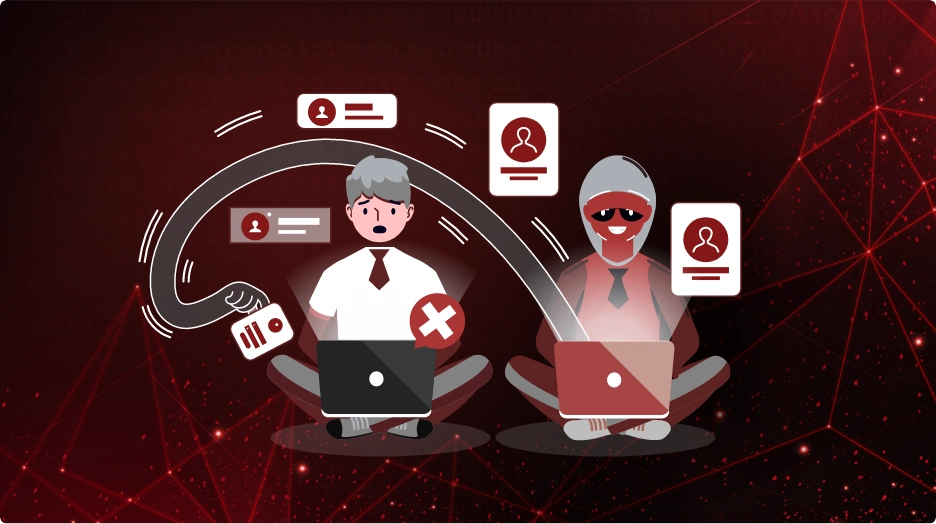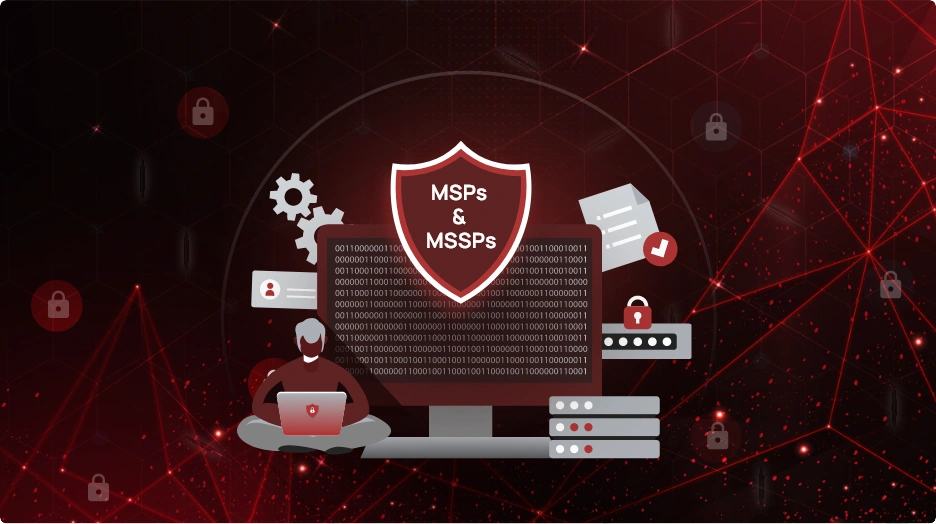Insider threats – a risk for MSPs and MSSPs

In the Information Technology sector, Managed Service Providers (MSPs) and Managed Security Service Providers (MSSPs) play pivotal roles in ensuring the smooth operation and security of organizations’ digital infrastructures. MSPs and MSSPs offer a range of services, from managing networks and systems to safeguarding against cyber threats. A primary challenge that MSPs and MSSPs face is the growing threat of insider threats. Unlike external attacks, insider threats come from individuals within the organization or its trusted circles, making them harder to detect and mitigate. Insider threats can have severe repercussions like data breaches, and damages of both financial and reputational nature.
Why are MSPs and MSSPs vulnerable to insider threats?
MSPs and MSSPs face unique vulnerabilities to insider threats due to the nature of their operations and dependencies. Understanding these vulnerabilities is crucial for implementing effective security measures.
- Multiple access points: MSPs and MSSPs oversee a multitude of client environments, each with its own set of systems, networks, and data. This diversity creates a complex access landscape, where managing permissions and monitoring activity becomes challenging. With numerous access points to safeguard, the risk of unauthorized activity increases, as it becomes more difficult to track and control user interactions across various platforms.
- High-privilege users: Technicians within MSPs often hold extensive access rights to fulfill their service delivery obligations effectively. While necessary for efficient operations, these high-privilege users become prime targets for potential compromise or manipulation by malicious insiders. Adversaries may exploit their elevated access to gain unauthorized entry, manipulate data, or compromise sensitive information, posing significant security risks to both the MSP and MSSP and its clients.
- Remote workforce: The trend towards remote work arrangements introduces complexities in maintaining traditional security controls. Decentralized teams operating from various locations can weaken oversight and monitoring capabilities, limiting visibility into user behavior and potential security incidents. The absence of physical presence makes it challenging to enforce consistent security protocols and respond promptly to emerging threats, amplifying the vulnerability of MSPs and MSSPs to insider risks.
- Supply chain vulnerabilities: MSPs rely heavily on third-party vendors for a range of services and technologies essential to their operations. While these partnerships facilitate service delivery and innovation, they also introduce supply chain vulnerabilities. Dependence on external entities increases the attack surface and introduces additional vectors for exploitation. Malicious actors may target vulnerabilities within the supply chain to infiltrate MSPs and MSSPs’ systems, compromising data integrity and service reliability.
The impact of insider threats on MSPs and MSSPs and their clients
Insider threats pose significant risks to both MSPs and MSSPs and their clients, with potential repercussions spanning various aspects of business operations and reputation.
Data breaches and financial losses:
One of the most immediate and tangible consequences of insider threats is the risk of data breaches and financial losses. Access privileges can be exploited to steal sensitive information, including intellectual property, customer data, or monetary assets. The loss of valuable data can result in financial repercussions, leading to costly recovery efforts and legal liabilities.
Reputational damage and loss of trust:
Beyond financial implications, insider threats can inflict lasting reputational damage and erode client confidence. Incidents of data breaches or security breaches can tarnish the reputation of MSPs and MSSPs, undermining trust and credibility with clients and stakeholders. The loss of trust can lead to client churn, potential business disruptions, and diminished market competitiveness, impacting long-term viability and growth.
Regulatory compliance failures:
Insider threats can also result in regulatory compliance failures, exposing MSPs and MSSPs and their clients to legal and regulatory scrutiny. Violations of industry regulations and data protection laws can attract hefty fines, penalties, and legal sanctions, further exacerbating financial losses and reputational damage.
Strategies for preventing and mitigating insider threats
Implementing effective strategies is essential for MSPs and MSSPs to prevent and mitigate insider threats, safeguarding their operations and client environments.
- Strong access controls: Adopting the least privilege principle ensures that users only have access to the resources necessary for their roles. Implementing multi-factor authentication adds an extra layer of security, while regular reviews of user permissions help identify and address any unauthorized access promptly.
- User activity monitoring and anomaly detection: Tracking user behavior and monitoring system activity in real time can help identify suspicious behavior indicative of insider threats. Anomaly detection algorithms analyze user actions and flag deviations from normal patterns, enabling timely intervention and response to potential security incidents.
- Continuous security monitoring: Employing specialized tools and technologies for continuous security monitoring enables proactive threat detection and response across all client environments. These tools aggregate and analyze security logs, network traffic, and user activity, enabling MSPs and MSSPs to identify and investigate potential threats promptly.
How can SSPM and CSPM help mitigate insider threats?
Given the critical nature of their responsibilities, MSPs and MSSPs must adopt proactive mitigation strategies like SSPM and CSPM solutions to counter insider threats effectively. By staying ahead of potential risks and vulnerabilities, MSPs and MSSPs not only protect their own operations but also ensure the security and integrity of their clients’ environments. As more and more digital assets are targeted every other day, proactive security measures become vital to maintaining trust and reliability in the IT ecosystem.
CheckRed is a comprehensive Cloud and SaaS Security Posture Management solution designed to address the evolving challenges of insider threats faced by MSPs and MSSPs. By offering both SaaS Security Posture Management (SSPM) and Cloud Security Posture Management (CSPM) functionalities under a single platform, CheckRed streamlines security operations and provides unparalleled visibility and control.
CheckRed empowers MSPs and MSSPs to proactively identify, assess, and mitigate insider threats across diverse client environments, and in their own organizational infrastructures. Its advanced features enable robust access controls, real-time monitoring, and risk detection, helping organizations stay ahead of emerging threats and safeguard critical assets.
MSPs and MSSPs must remain vigilant against insider threats to protect their operations and client environments. With CheckRed, MSPs and MSSPs can strengthen their security posture, enhance client trust, and mitigate the impact of insider threats effectively.


